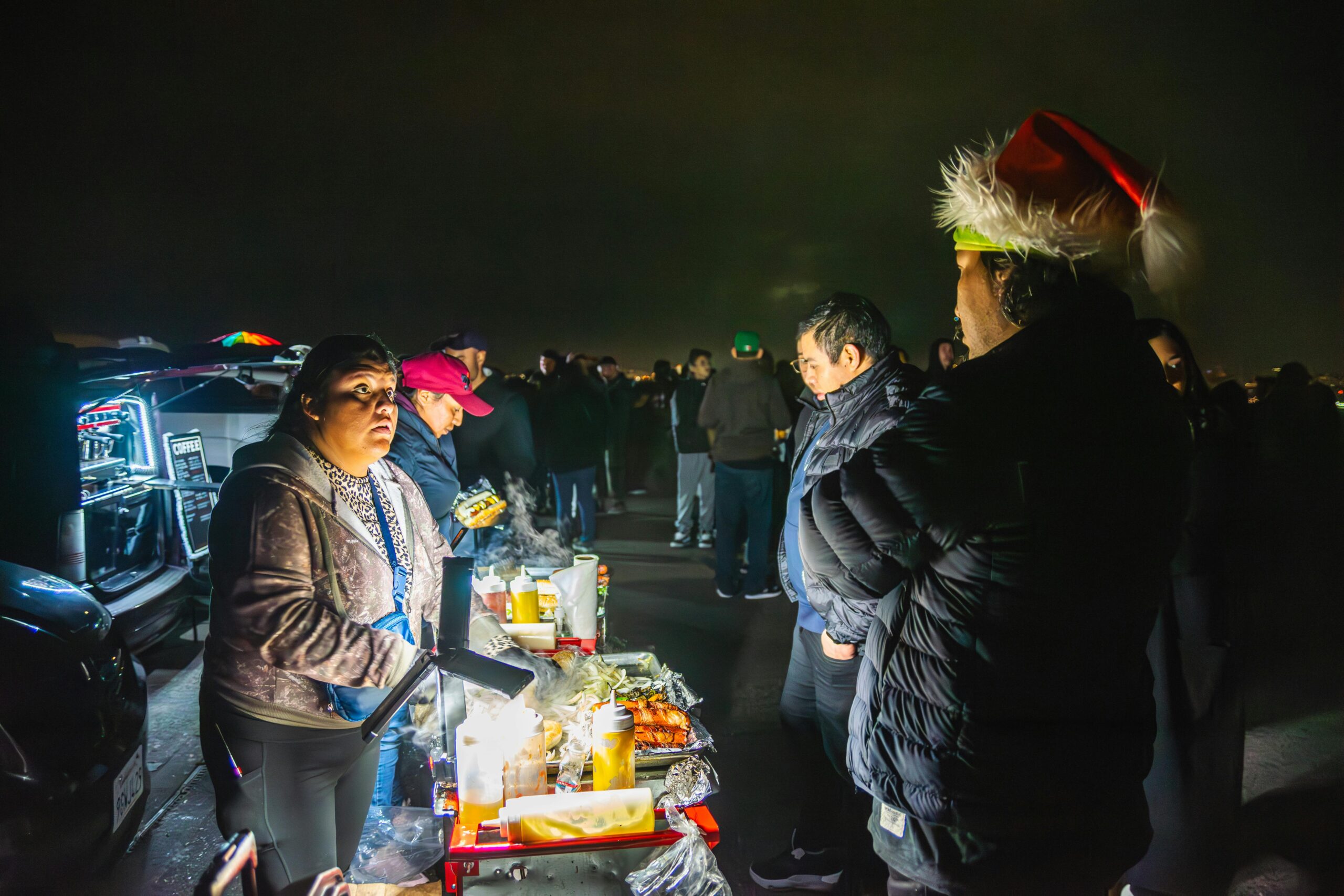Especially in developing countries, you can see many sidewalk vendors selling beverages or food. They often sell traditional items from their country, so buying from them lets you experience the local culture. But have you ever wondered how these sidewalk vendors live, or why they started their business? If you want to learn more about the vendors, this article is for you! It provides basic information and includes an interview with a sidewalk vendor in the Philippines. We hope you enjoy this article!
Basic information
History of sidewalk vendor
Sidewalk vendors existed in ancient civilizations. In the Agora in Greece or the Forum in Rome, for example, many merchants sold food or utensils on the street.


During Medieval Europe, sidewalk vendors became more common with the development of towns. The most famous example is the periodic market. This type of market also existed in the old era of Japan and even in some rural areas.
The 18th–19th century might have been the most active period for sidewalk vendors. In conjunction with urbanization, many laborers migrated to the capital. But for most of them, products in the capital were too expensive. So, to supply cheap products they could afford, many sidewalk vendors also came to the capital and started their businesses targeting those laborers. Maybe you are familiar with people selling newspapers in New York during the 19th century, which is also an example of sidewalk vendors in those days.

So, sidewalk vendors have a long history. But how about these days? Sidewalk vendors have changed their role from “supply for low-wage people” to “traditional street food.” Pho in Vietnam, tacos in Mexico, and pad thai in Thailand. These foods are the image of the country’s traditional food, and you can enjoy them at sidewalk vendors. So, their role is important in supplying traditional local foods to tourists nowadays. Some sidewalk vendors cooperate with a touring company to make people experience the local culture. On the other hand, some sidewalk vendors are eliminated due to urbanization. For governments, sidewalk vendors, especially the floating shops, are obstacles to building things. Tradition and development—these two conflicts are a problem in some countries.
What is a vendor’s duty?
Their duty starts with preparing a place to sell. Mostly, they prepare their stall. The time they start preparation depends on each vendor, but their mornings are usually very early since their shops need to be ready before people leave their houses for work or school.
After they prepare, they wait for their customers. Usually, they just sit and wait, but some food vendors make the food on the spot, so they are busy, especially during lunchtime. Moreover, they need to serve their customers as quickly as possible since most of them don’t have much time.
When they finish their long day of selling, they need to clean up their selling place and then replenish supplies for the next day. For those who sell handmade products, their work doesn’t end even after they get home since they need to make new items.
Skill they use
・attracting customers

They are a side vendor, not a restaurant or famous chain store. So they don’t have any branding, they are even not on Google Maps. Local customers are not enough for their selling, so they usually use their tactics to attract new customers. As I mentioned, some of them have a contract with a tour company, or even use an SNS to advertise themselves. But mostly they attract customers by selling where various people gather like around a big mall or school. These make it easy to secure a stable number of customers.
・managing selling
Of course, sidewalk vendors need to manage their profits. It is important to comprehend how much they sell and the cost to not be in deficit.
・following the law
Sidewalk vendors need to fulfill the requirements or laws in their region. These requirements also include hygiene standards, and partly, some vendors don’t follow them. When you eat food at those places, you might get a disease from it so you need to be careful when you eat street foods. Make sure other people are buying from the side vendor.
・diffrentiating
This perspective is fundamental when running a business but especially field of side vending, this element is important. If you see a part where sinde vendors are concentrated like near a mall, you can observe that most of the vendors are selling the same sort of products at the same price. So they need to differentiate from other vendors so customers will choose them rather than others.
Salary of a sidewalk vendor
The salary of a sidewalk vendor varies. It depends on where, what, and how they sell. But I’ll show you the average earnings of sidewalk vendors in three countries.
The average salary of the vendors in America
Food truck→$20,000~$50,000/year
small float→$18,000~$36,000/year
Sidewalk vendors are common in some states in America. Hotdog food trucks in New York are already a kind of signature of America. Sidewalk vendors in America tend to sell well, especially when they sell in crowded places.
Philippines
$2044~$5112/year
In the Philippines, vendors are typically low-wage earners, assuming that every product in the Philippines is cheaper than in other countries. However, this wage might not be enough to live on. The salary is lower than the average salary in the Philippines.
India
$1277.64~$4260/year
The salary is cheaper than the salary in the Philippines. On the other hand, the average salary of laborers in India is $4,586/year, so relatively speaking, sidewalk vendors in India are earning a fair wage.
Interview with the sidewalk vendor
Hello, I’m Ryoma. Today, I interviewed a sidewalk vendor in the Philippines. She was selling small snacks and stationery in front of a university. As you’ve read, there are a lot of issues and skills required to work as a sidewalk vendor, but let’s take a closer look at the reality of their lives. The most reliable information doesn’t come from the internet, where anyone can write, but from people who are working in the field.
What is your job?
My job is as a sidewalk vendor. I’ve been doing this since 2014, so it’s been 10 years now. I sell stationery and small snacks that I buy at Gaisano. I sell these in front of a university since it’s a place with many people and high demand.
What kind of skills do you use?
Sales skills: This includes communication skills and management skills. I use communication skills to build relationships with customers. Most of my customers are university students, so I know many of them, and they often come back to my shop. These skills help me attract and retain regular customers.
As for management skills, this ability helps me decide what to buy and where to sell. I usually sell stationery because many university students come to my store when they run out of their supplies and need a new one. In this location, there is a high demand for stationery. Moreover, most of the sidewalk vendors here sell street food for students’ lunch, so I sell stationery to differentiate myself from them.

The most difficult part of being a sidewalk vendor is that you need to do everything by yourself. There’s no one to mentor you or make decisions for you. However, I’m confident in my management skills as a vendor since I’ve been doing this for 10 years now.
Why did you start this job?
I started this job to earn money for my family. My husband’s income alone would not be enough to provide food for our children. However, I’m not the type of person who can work by simply following orders. So I decided to start my shop, where I could manage everything by myself. I think this job suits my personality better.
What are the good points of doing this job?
I can earn extra money for my family. To start this career, you don’t need a degree or any authorized qualifications. This was the type of job I had always desired. My family’s finances are more stable now compared to before I started this job. I think the best part of this job is that anyone can start it and earn extra money.
What are the bad points or problems of doing this job?
This job is very demanding. You need to wake up very early since one of the biggest selling opportunities is during the morning commute, and my tent needs to be ready by that time. Also, sales fluctuate dramatically. The hardest time was during COVID-19. My main customers were students from Capitol University, but during that period, the school was closed, and students were taking online classes, so I lost my main customers for a while. Moreover, there was no aid from the government, and sales declined. Therefore, I think this job is good as a “side income,” but if it’s your main income, it can be very risky, and your finances will not be stable.

What is your dream?
My dream is to buy a house. Currently, we are renting a house but I want our own house.
How was the article? Being a sidewalk vendor is a job with both tradition and variety and even today, it offers equal opportunities to people who need extra income. On the other hand, because of the equality that allows anyone to start this job, it is also a risky and competitive field.
It is very rare to have an opportunity like this to listen to a sidewalk vendor’s real voice, especially if you live in a developed country. I hope this article gave you new insights into the world and enriched your perspective on life.
See you in the next article!




